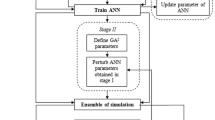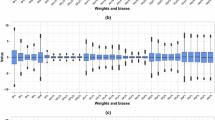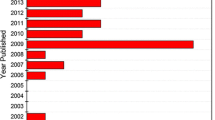Abstract
The meaningful quantification of uncertainty in hydrological model outputs is a challenging task since complete knowledge about the hydrologic system is still lacking. Owing to the nonlinearity and complexity associated with the hydrological processes, Artificial neural network (ANN) based models have gained lot of attention for its effectiveness in function approximation characteristics. However, only a few studies have been reported for assessment of uncertainty associated with ANN outputs. This study uses a simple method for quantifying predictive uncertainty of ANN model output through first order Taylor series expansion. The first order partial differential equations of non-linear function approximated by the ANN with respect to weights and biases of the ANN model are derived. A bootstrap technique is employed in estimating the values of the mean and the standard deviation of ANN parameters, and is used to quantify the predictive uncertainty. The method is demonstrated through the case study of Upper White watershed located in the United States. The quantitative assessment of uncertainty is carried out with two measures such as percentage of coverage and average width. In order to show the magnitude of uncertainty in different flow domains, the values are statistically categorized into low-, medium- and high-flow series. The results suggest that the uncertainty bounds of ANN outputs can be effectively quantified using the proposed method. It is observed that the level of uncertainty is directly proportional to the magnitude of the flow and hence varies along time. A comparison of the uncertainty assessment shows that the proposed method effectively quantifies the uncertainty than bootstrap method.







Similar content being viewed by others
References
Abrahart RJ, See LM, Dawson CW, Shamseldin AY, Wilby RL (2010) Nearly two decades of neural network hydrologic modeling. In: Sivakumar B, Berndtsson R (eds) Advances in data-based approaches for hydrologic modeling and forecasting. World Scientific Publishing, Hackensack, pp 267–346
Aksoy H, Dahamsheh A (2009) Artificial neural network models for forecasting monthly precipitation in Jordan. Stoch Environ Res Risk Assess 23(7):917–931
Alvisi S, Franchini M (2011) Fuzzy neural networks for water level and discharge forecasting with uncertainty. Environ Modell Softw 26(4):523–537
Behzadian K, Kapelan Z (2009) Stochastic sampling design using a multi-objective genetic algorithm and adaptive neural networks. Environ Modell Softw 24(4):530–541
Bishop CM (1995) Neural networks for pattern recognition. Oxford University Press, New York
Boucher MA, Laliberté JP, Anctil F (2010) An experiment on the evolution of an ensemble of neural networks for streamflow forecasting. Hydrol Earth Syst Sci 14:603–612
Bowden GJ, Dandy GC, Maier HR (2004a) Input determination for neural network models in water resources applications. Part 1—background and methodology. J Hydrol 301(1–4):75-92
Bowden GJ, Dandy GC, Maier HR (2004b) Input determination for neural network models in water resources applications. Part 2. Case study: forecasting salinity in a river. J Hydrol 301(1–4):93–107
Campolo M, Soldati A, Andreussi P (1999) Forecasting river flow rate during low flow periods using neural networks. Water Resour Res 35(11):3547–3552
Chryssolouris G, Lee M, Ramsey A (1996) Confidence interval prediction for neural network models. IEEE Trans Neural Netw 7(1):229–232
Dawson CW, Wilby R (1998) An artificial neural network approach to rainfall runoff modeling. Hydrol Sci J 43(1):47–66
Dawson CW, Brown M, Wilby R (2000) Inductive learning approaches to rainfall–runoff modelling. Int J Neural Syst 10:43–57
Ding A, He X (2003) Back propagation of pseudo-errors: neural networks that are adaptive to heterogeneous noise. IEEE Trans Neural Netw 14(2):253–262
Elshorbagy A, Corzo G, Srinivasulu S, Solomatine DP (2010a) Experimental investigation of the predictive capabilities of data driven modeling techniques in hydrology—part 1: concepts and methodology. Hydrol Earth Syst Sci 14:1931–1941
Elshorbagy A, Corzo G, Srinivasulu S, Solomatine DP (2010b) Experimental investigation of the predictive capabilities of data driven modeling techniques in hydrology—part 2: application. Hydrol Earth Syst Sci 14:1943–1961
Firat M, Gungor M (2010) Monthly total sediment forecasting using adaptive neuro fuzzy inference system. Stoch Environ Res Risk Assess 24:259–270
Goldberg DE (1989) Genetic algorithms in search, optimization and machine learning. Addison-Wesley, Reading
Han DT, Kwong LiS (2007) Uncertainties in real-time flood forecasting with neural networks. Hydrol Process 21(2):223–228. doi:10.1002/hyp.6184
Holland JH (1975) Adaptation in natural and artificial systems. University of Michigan Press, Ann Arbor
Hsieh C (1993) Some potential applications of artificial neural networks in financial management. J Syst Manag 44(4):12–15
Khan MS, Coulibaly P (2006) Bayesian neural network for rainfall–runoff modeling. Water Resour Res 42:W07409. doi:10.1029/2005WR003971
Khosravi A, Nahavandi S, Creighton D (2010) A prediction interval-based approach to determine optimal structures of neural network meta models. Expert Syst Appl 37(3):2377–2387
Kingston GB, Lambert MF, Maier HR (2005) Bayesian training of artificial neural network used for water resources modeling. Water Resour Res 41:W12409. doi:10.1029/2005WR004152
Luk KC, Ball JE, Sharma A (2000) A study of optimal model lag and spatial inputs to artificial neural network for rainfall forecasting. J Hydrol 227:56–65
MacKay KJC (1992) A practical Bayesian framework for backpropagation networks. Neural Comput 4:448–472
Maier HR, Ashu J, Graeme CD, Sudheer KP (2010) Methods used for the development of neural networks for the prediction of water resource variables in river systems: current status and future directions. Environ Modell Softw 25(8):891–909
Nash JE, Sutcliffe JV (1970) River flow forecasting through conceptual models: 1. A discussion of principles. J Hydrol 10:282–290
Nayak PC, Sudheer KP, Rangan DM, Ramasastri KS (2005) Short-term flood forecasting with a neurofuzzy model. Water Resour Res 41:W04004. doi:10.1029/2004WR003562
Nix D, Weigend A (1994) Estimating the mean and variance of the target probability distribution. In IEEE international conference on neural networks
Papadopoulos G, Edwards P, Murray A (2001) Confidence estimation methods for neural networks: a practical comparison. IEEE Trans Neural Netw 12(6):1278–1287
Sajikumar N, Thandaveswara BS (1999) A non-linear rainfall–runoff model using an artificial neural network. J Hydrol 216:32–35
Schittkowski K (2002) EASY-FIT: a software system for data fitting in dynamic systems. Struct Multidiscip Optim 23:153–169
Sharma SK, Tiwari KN (2009) Bootstrap based artificial neural network (BANN) analysis for hierarchical prediction of monthly runoff in Upper Damodar Valley Catchment. J Hydrol 374:209–222
Shrestha R, Nestmann F (2009) Physically based and data driven models and propagation of input uncertainties in river flood prediction. J Hydrol Eng 1412:1309–1319
Shrestha DL, Solomatine DP (2006) Machine learning approaches for estimation of prediction interval for the model output. Neural Netw 19(2):225–235
Silverman D, Dracup JA (2000) Artificial neural networks and long-range precipitation in California. J Appl Meteorol 31(1):57–66
Sonmez R (2011) Range estimation of construction costs using neural networks with bootstrap prediction intervals. Expert Syst Appl 38(8):9913–9917
Srivastav RK, Sudheer KP, Chaubey I (2007) A simplified approach to quantifying predictive and parametric uncertainty in artificial neural network hydrologic models. Water Resour Res 43:W10407. doi:10.1029/2006WR005352
Sudheer KP (2005) Knowledge extraction from trained neural network river flow models. J Hydrol Eng 10(4):264–269
Sudheer KP, Gosain AK, Ramasastri KS (2002) A data-driven algorithm for constructing artificial neural network rainfall–runoff models. Hydrol Process 16(6):1325–1330
Thirumalaiah K, Deo MC (2000) Hydrological forecasting using neural networks. J Hydrol Eng 5(2):180–189
Tiwari MK, Chatterjee C (2010) Uncertainty assessment and ensemble flood forecasting using bootstrap based artificial neural networks (BANNs). J Hydrol 382(1–4):20–33
Zhang X, Liang F, Srinivasan R, Van Liew M (2009) Estimating uncertainty of streamflow simulation using Bayesian neural networks. Water Resour Res 45:W02403. doi:10.1029/2008WR007030
Author information
Authors and Affiliations
Corresponding author
Rights and permissions
About this article
Cite this article
Kasiviswanathan, K.S., Sudheer, K.P. Quantification of the predictive uncertainty of artificial neural network based river flow forecast models. Stoch Environ Res Risk Assess 27, 137–146 (2013). https://doi.org/10.1007/s00477-012-0600-2
Published:
Issue Date:
DOI: https://doi.org/10.1007/s00477-012-0600-2




